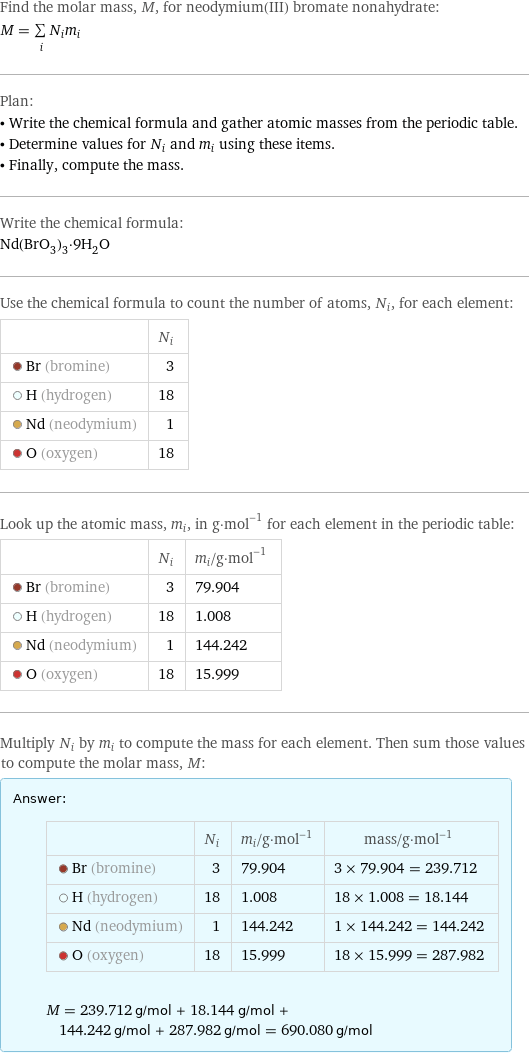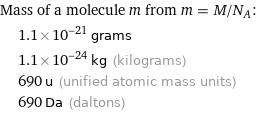Input interpretation

neodymium(III) bromate nonahydrate | molar mass
Result

Find the molar mass, M, for neodymium(III) bromate nonahydrate: M = sum _iN_im_i Plan: • Write the chemical formula and gather atomic masses from the periodic table. • Determine values for N_i and m_i using these items. • Finally, compute the mass. Write the chemical formula: Nd(BrO_3)_3·9H_2O Use the chemical formula to count the number of atoms, N_i, for each element: | N_i Br (bromine) | 3 H (hydrogen) | 18 Nd (neodymium) | 1 O (oxygen) | 18 Look up the atomic mass, m_i, in g·mol^(-1) for each element in the periodic table: | N_i | m_i/g·mol^(-1) Br (bromine) | 3 | 79.904 H (hydrogen) | 18 | 1.008 Nd (neodymium) | 1 | 144.242 O (oxygen) | 18 | 15.999 Multiply N_i by m_i to compute the mass for each element. Then sum those values to compute the molar mass, M: Answer: | | | N_i | m_i/g·mol^(-1) | mass/g·mol^(-1) Br (bromine) | 3 | 79.904 | 3 × 79.904 = 239.712 H (hydrogen) | 18 | 1.008 | 18 × 1.008 = 18.144 Nd (neodymium) | 1 | 144.242 | 1 × 144.242 = 144.242 O (oxygen) | 18 | 15.999 | 18 × 15.999 = 287.982 M = 239.712 g/mol + 18.144 g/mol + 144.242 g/mol + 287.982 g/mol = 690.080 g/mol
Unit conversion

0.69008 kg/mol (kilograms per mole)
Comparisons

≈ 0.96 × molar mass of fullerene ( ≈ 721 g/mol )

≈ 3.6 × molar mass of caffeine ( ≈ 194 g/mol )

≈ 12 × molar mass of sodium chloride ( ≈ 58 g/mol )
Corresponding quantities

Mass of a molecule m from m = M/N_A: | 1.1×10^-21 grams | 1.1×10^-24 kg (kilograms) | 690 u (unified atomic mass units) | 690 Da (daltons)

Relative molecular mass M_r from M_r = M_u/M: | 690